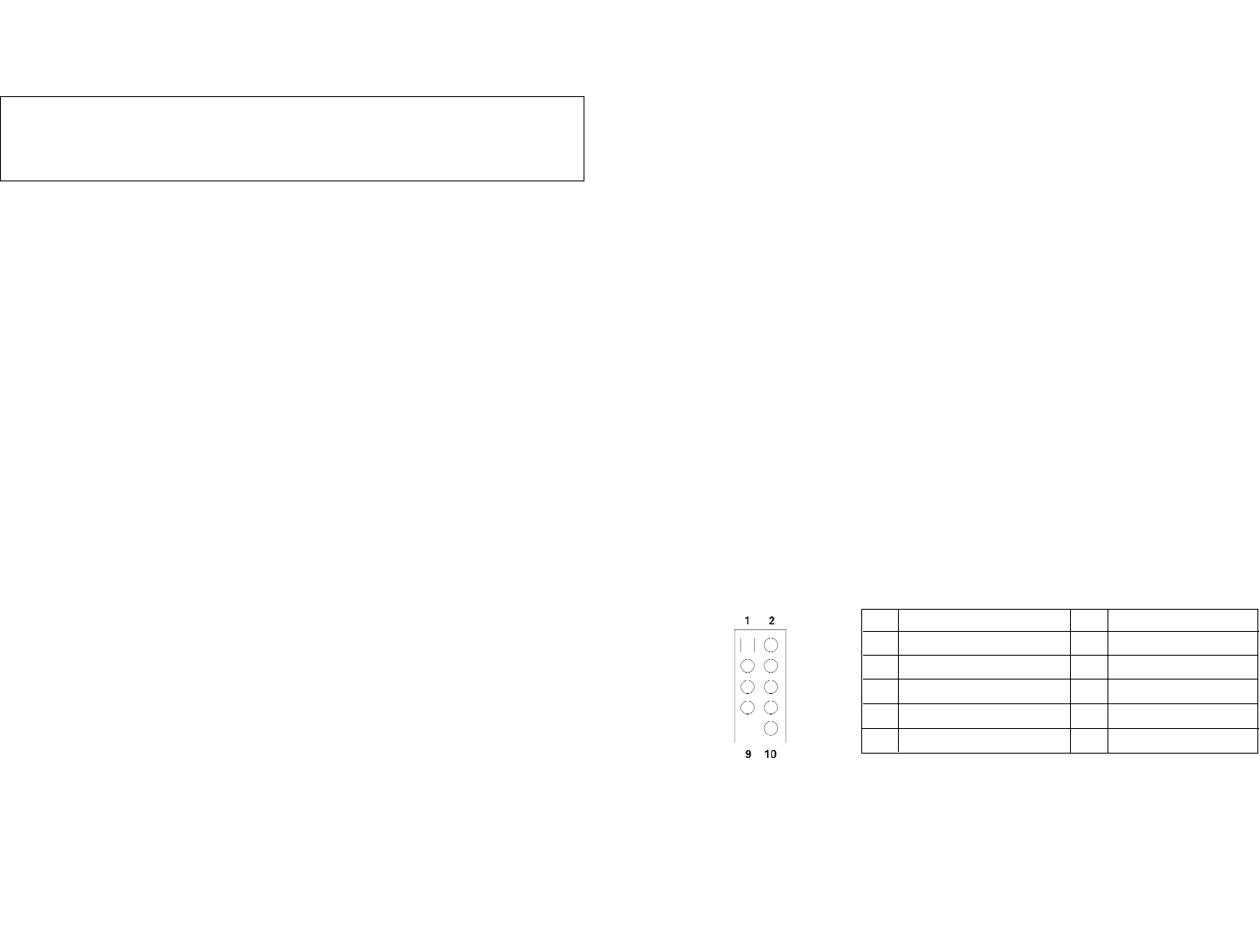
normal, and won't affect functionality. (In other words there may be extra
standoffs.) Remove unnecessary standoffs. There are two empty standoff
holes in the case. Insert the extra clip-on standoffs from your tool bag into
the holes should your motherboard require it.
4. Attach your motherboard to the brass standoffs with the provided Phillips-
head screws. Your motherboard is now installed.
Connecting the Power and LED
The Antec AR300 is an ATX12V-compatible power supply. It has a single 20-
pin Main Power Connector, a SATA Power Connector, and a 4-pin +12V
Power Connector for the motherboard. It also includes five 4-pin Peripheral
Power Connectors for your drives.
1. Connect the 20-pin ATX power connector (and +12V connectors if
appropriate) to your motherboard.
2. Connect the Reset switch (labeled RESET SW) to your motherboard at the
RST connector. Make sure the label always faces the front of the case.
3. Connect the Power Switch (labeled POWER SW) to the PWR connector on
your motherboard.
4. Connect the Hard Drive Activity LED (labeled HDD LED) to the appropriate
header on your motherboard.
5. To power the front decorative LEDs, locate the 4-pin Molex connector
that's attached to the front bezel. Connect it to a 4-pin connector on the
power supply. The LED's will light up when you turn on your system.
Connecting the USB ports
You'll find two 5-pin internal USB connectors (on separate cable sets) attached
to the front USB connectors. Note: If you want to use both front USB connectors
and the 8-in-1 card reader, your motherboard must have at least 3 internal USB
headers.
Here's how to connect the internal USB connector to your motherboard headers:
1. Check the USB pin layout in your motherboard user manual and make sure
it follows this standard pin out:
Pin 1: USB Power - may also be labeled +5V
Pin 2: Negative Signal - may also be labeled P-, D-, USB0-, etc.
Pin 3: Positive Signal - may also be labeled P+, D+, USB0+, etc.
Pin 4: Ground
Pin 5: Ground (sometimes this pin is missing)
Note: Your motherboard's USB pin layout may differ from this common
2
Pin Signal Name Pin Signal Name
1 USB Power 1 2 USB Power 2
3 Negative Signal 1 4 Negative Signal 2
5 Positive Signal 1 6 Positive Signal 2
7 Ground 1 8 Ground 2
9 Key (No Connection) 10 Empty Pin
At Antec, we continually refine and improve our products to ensure the highest
quality. So it's possible that your new case may differ slightly from the
descriptions in this manual. This isn't a problem; it's simply an improvement.
As of the date of publication, all features, descriptions, and illustrations in this
manual are correct.
Aria – MicroATX Cube Case
Your new case includes a preinstalled 300 Watt AR300 power supply, with
Universal Input and Active PFC (power factor correction). The AR300 includes a
quiet, low-speed 120mm fan that exhausts heat from the case.
The Universal Input feature allows you to connect the power supply to any
standard power circuit between 90VAC and 265VAC, without having to worry
about setting a voltage switch. The Active PFC feature improves the power
factor of the power supply by altering the input current wave shape. This
results in increased energy efficiency, reduced heat loss, prolonged life for
power distribution and consumption equipment, and improved output voltage
stability. Note: AR300's active PFC circuitry complies with European standard
regulation code EN61000-3-2.
Setting Up
1. Place the case upright on a flat, stable surface. The power supply fan
should be at the back, facing you.
2. Remove the screw from the rear of the case and remove the top panel by
sliding it towards the rear of the case. Set the panel safely aside.
3. At the rear of each side panel, you'll find a locking tab. Remove both
panels by squeezing the tabs and pushing the panels towards the front of
the case.
4. Inside the case, you'll see the 8-in-1 card reader, the power supply, some
wiring with marked connectors (USB, PWR etc.), an installed I/O panel and
a power cord. You'll also find a bag of hardware (screws, clip-on standoff,
a fan bracket, etc.).
Installing the Motherboard
This manual does not cover CPU, RAM, or expansion card installation. Please
consult your motherboard manual for specific mounting instructions and
troubleshooting.
1. Make sure you have the appropriate I/O panel for your motherboard. If the
standard panel provided is not suitable for your motherboard, please
contact your motherboard manufacturer for the correct I/O panel.
2. This case includes two brass standoffs and four clip-on standoffs, which
are preinstalled. Line up the holes on your motherboard with the standoffs.
3. Install the motherboard by sliding it towards the rear of the case until the
hook on each of the clip-on standoffs "clips" the holes on the motherboard.
Not all motherboards will match with all of the provided standoffs; this is
Disclaimer
This manual is intended only as a guide for Antec's computer enclosures. For detailed instructions
on installing your motherboard and peripherals, please refer to the user 's manuals which were
supplied with with your components and drives.
1
ARIA_Int_Manual.qxd 2/27/2004 2:50 PM Page 6
